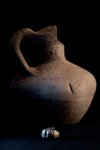Sublime
An inspiration engine for ideas
Archaeologists can excavate a sunken ship in Denmark and determine that it was built in Ireland. Analysis of ancient DNA can make reliable sex determinations of the dead, tease out their family relationships, and even reveal the colour of their eyes and hair; it also makes possible the wider tracking of migrations and larger demographic change.
Neil Price • The Children of Ash and Elm
architecture
Valentina Alfaro Kobernyk • 3 cards
future archeology
alexi gunner • 1 card
A devastating fire 2,200 years ago preserved a moment of life and war in Iron Age Spain, down to a single gold earring
phys.org
History
Amelia Desertsong • 1 card
Walking this gnarled shore one summer afternoon, I blundered upon a matrix of faint stone rectangles embedded in the tundra: vestiges of the monks’ ancient dwellings, hundreds of years older, even, than the Anasazi ruins in Davis Gulch.
Jon Krakauer • Into the Wild
Andrea Hofmann (Dreanda)
@dreanda
History
Recherches histoire de l'art
Eve the alchemist • 1 card